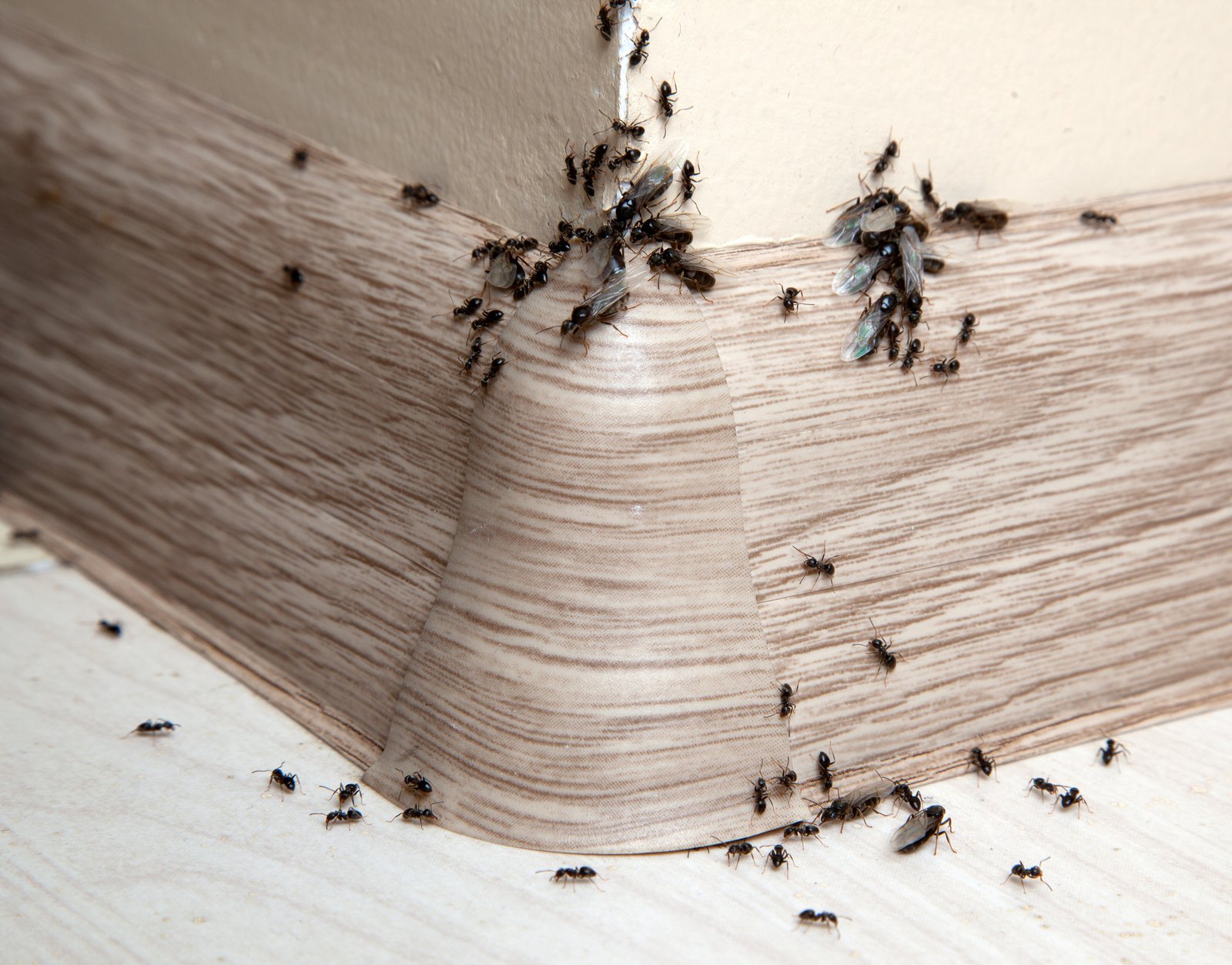
What Attracts Ants?
Have you ever wondered why ants seem to march in perfect formation? There they are, one by one, towards your pantry or kitchen counter. Totally in sync!
Ants are fascinating creatures with remarkable organization and social behavior. However, they can become a nuisance when they invade our homes or buildings.
We’ll explore the factors that attract ants and explain why they are drawn to certain areas. By understanding what attracts ants, we can proactively prevent infestations and maintain a pest-free environment.
Table of Contents
Food Sources
Food sources are a gourmet feast for ants. They play a pivotal role in attracting them.
These resourceful insects have an exceptional sense of smell. It allows them to detect even the tiniest traces of food, from crumbs and spills to uncovered fruits. There may also be some improperly stored pet food that can be a tempting invitation.
Ants have a particular affinity for sugary substances. You could spill it could be spilled juice or soda, sticky residues left behind by sweet treats, and even the nectar of flowers. Their insatiable appetite extends beyond the realm of sweets.
Ants are equally attracted to protein-based foods like leftover meat or dairy products. It’s best to maintain a clean and tidy environment minimizing the appeal of food sources to ants.
Moisture and Water
Ants are known for their resilience. They can adapt to various environments.
However, one element they can only do with is water. It is a vital element for ants’ survival.
That is why moisture-rich areas act as magnets for ants. Thus, making them attractive locations for establishing colonies and foraging for food. Here are a few examples:
- Leaky pipes
- Dripping faucets
- Excessive condensation
- Bathrooms
- Kitchens
- Basements
- Areas with poor ventilation
- Puddles
- Poorly drained flower beds
- Damp soil
These examples provide the necessary moisture ants seek. They are susceptible to ant infestations due to higher humidity levels. They can access cracks in the walls or floors, utility lines, or gaps in windows and doors.
It would be best to address any water-related issues promptly to discourage them. Fix leaks, repair faulty plumbing, and improve ventilation in moisture-prone areas. These are effective measures to eliminate the attractive moisture sources for ants.
Ensure proper drainage around the building. Redirecting water away from the foundation can also help prevent their entry.
Entry Points and Nesting Sites
Ants are remarkably adept at infiltrating buildings. Even the tiniest of openings!
That makes it crucial to address potential entry points and nesting sites. However, sometimes the expertise of professionals is.
You can also go ahead and click for commercial pest control services here when it becomes necessary. It would be an excellent choice for comprehensive protection.
Ants can exploit various entry points, including the following:
- Cracks in walls
- Floors
- Foundations
- Gaps around windows and doors
- Small openings around utility lines
Ants are skilled climbers who can utilize nearby trees or vegetation to access higher floors or attics.
Once inside, they establish their nests. It’s often in concealed areas such as wall voids, crawlspaces, beneath floorboards, or hidden corners.
Sealing potential entry points is crucial to fortify your defenses against ant invaders. Inspect your property and install weather stripping on doors and windows to create a tight seal.
Please pay attention to utility entry points, ensuring they are sealed or protected. These preventive measures can reduce the likelihood of ants finding their way inside.
Eliminating potential nesting sites is equally important. Ants are attracted to cluttered areas. It provides hiding spots and protection for their colonies.
It’s best to maintain a tidy indoor and outdoor environment. Declutter and remove unnecessary materials that could serve as nesting sites.
Scent Trails and Communication
Ants possess a remarkably sophisticated communication system. It revolves around scent trails and chemical signals.
Unravel the intricacies of ant communication. It can help us gain valuable insights into how these tiny creatures navigate their surroundings. Plus how they coordinate their activities.
Here are a few tips to understand the power of scent trails.
Scent Trails
When ants discover a promising food source, they leave behind a trail of pheromones. It is a specific type of chemical signal. It guides other members of the colony to the location.
These trails act as invisible maps. Thus, leading ants to the food and back to the nest.
Ants can release different types of pheromones depending on the situation. For example, they may remove a more potent scent when they find a rich food source.
They can also leave a weaker scent when the food is less abundant. The trails can persist for extended periods, attracting more ants to the area.
Communication and Organization
Ants use pheromones for more complex forms of communication within their colonies. These chemical signals carry specific messages and meanings. It helps ants coordinate their actions and work together efficiently.
For instance, alarm pheromones are released when ants feel threatened or detect danger. It triggers a defensive response and alerts other ants to the potential risk.
Additionally, ants use pheromones to mark paths. It defines territory boundaries. It signals the presence of food sources or potential nest sites.
Disrupt Scent Trails
To disrupt scent trails and deter ants from invading your space, consider the following measures:
Proper Food Storage
Store food in airtight containers to get rid of ants. It prevents them from detecting and accessing it.
It reduces the likelihood of leaving enticing food odors that can attract foraging ants. Additionally, keep ripe fruits in the refrigerator. Clean up any fallen fruits or vegetables in your garden too.
Strategic Repellents
Consider using natural repellents like cinnamon, peppermint oil, or citrus peels. Use them near potential entry points to deter ants.
These strong scents can interfere with their ability to follow scent trails. Additionally, you can create physical barriers. Use diatomaceous earth or adhesive tape to prevent ants from crossing specific areas.
Understanding What Attracts Ants
Understanding what attracts ants is crucial in preventing infestations. That applies to your home or commercial building.
Start by eliminating accessible food sources and addressing moisture-related issues. Remember to seal entry points and disrupt scent trails. These tips can reduce the likelihood of ants invading your space.
Was this article helpful? If so, visit our blog for more content.
Last Updated on June 1, 2023













